Houses of the Holy: Plans Seek To Convert Historic Roanoke Churches into Apartments
The idea to transform churches into housing is becoming a trend in Roanoke, where at least three such projects are either under construction or being planned.
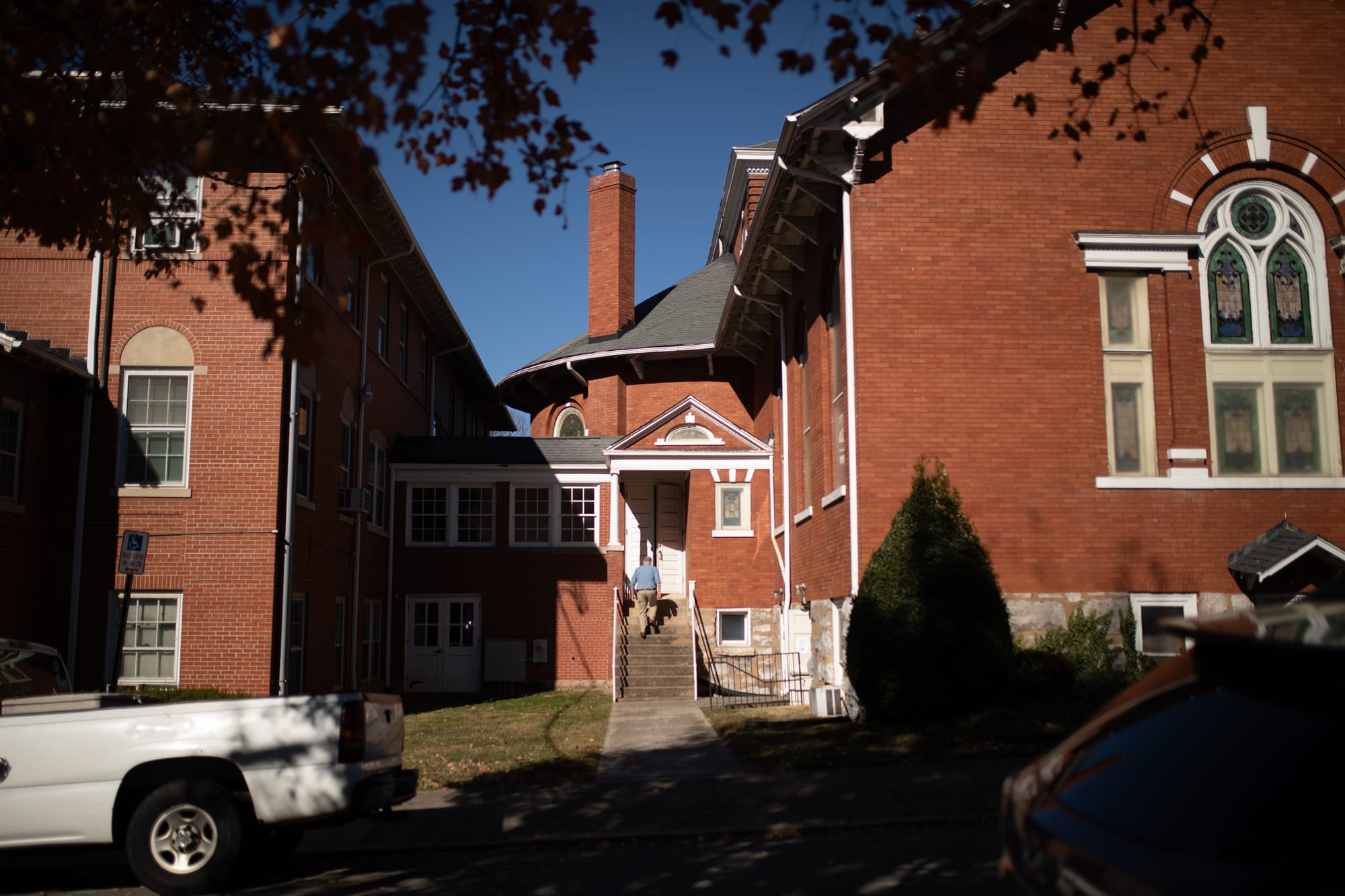
The Rev. Joanna Paysour’s voice caught as she opened the last-ever Sunday worship service at Trinity United Methodist Church.
“I greet you in the name of our lord and savior, Jesus Christ,” Paysour said, her words tripping and tumbling in her throat, as she tried to quell her emotions in front of more than 40 people who sat in the church pews on Nov. 19, the biggest crowd in many a Sunday.
“I am the pastor here, I am Pastor Joanna. And I stand with you in the bittersweet … joy of today.”
Trinity is closing its white doors for good, as a declining membership and rising costs made it too expensive for a small congregation to maintain the sprawling sanctuary, which has stood at the corner of Mountain Avenue and Third Street in Roanoke’s Old Southwest neighborhood for 120 years. The congregants, which have averaged only a couple dozen regular attendees in recent years, will merge their church with Greene Memorial United Methodist four blocks away in downtown.
If Roanoke leaders approve the plans, the congregation will sell the church building to Restoration Housing, a Roanoke developer that wants to build 15 affordable apartments geared toward lower-income older people. The Roanoke Planning Commission will consider Restoration’s plans during its regular meeting on Dec. 11.
The idea to transform churches into residential properties is becoming a trend in Roanoke, where at least three such projects are either under construction or being planned. Renovations at the former Belmont Baptist Church in Southeast Roanoke are farthest along, with residents possibly moving in by next summer. The former Calvary Baptist on Campbell Avenue was purchased late last year for $1.15 million by a group headed by Richard Macher, founder and owner of the Roanoke-based Macado’s restaurant chain, who is considering building apartments there. Soon, Trinity United Methodist could join the list of historic churches undergoing a transfiguration.
The three development projects bear similarities: A large, old church in the heart of the city has watched congregations age and wither; maintenance costs and basic expenses have become too much for a declining membership to afford; and the possibility of historic tax credits make renovations attractive projects for developers. Roanoke is also in desperate need of affordable housing, according to recent studies that have found that the city may be short 3,500 units, if not more.
Redeveloping old church buildings will cut into that deficit a little.
“Is this a trend? I think so,” said Brent Cochran, whose Belmont Lofts, LLC is handling the redevelopment at the former Belmont Baptist, a three-story brick church on 9th Street Southeast.
“It seems like a lot of old churches are dying and the buildings are just sitting there. What happens to those buildings?” he said. “We can re-purpose them in a positive way and hopefully become an anchor for the neighborhood.”
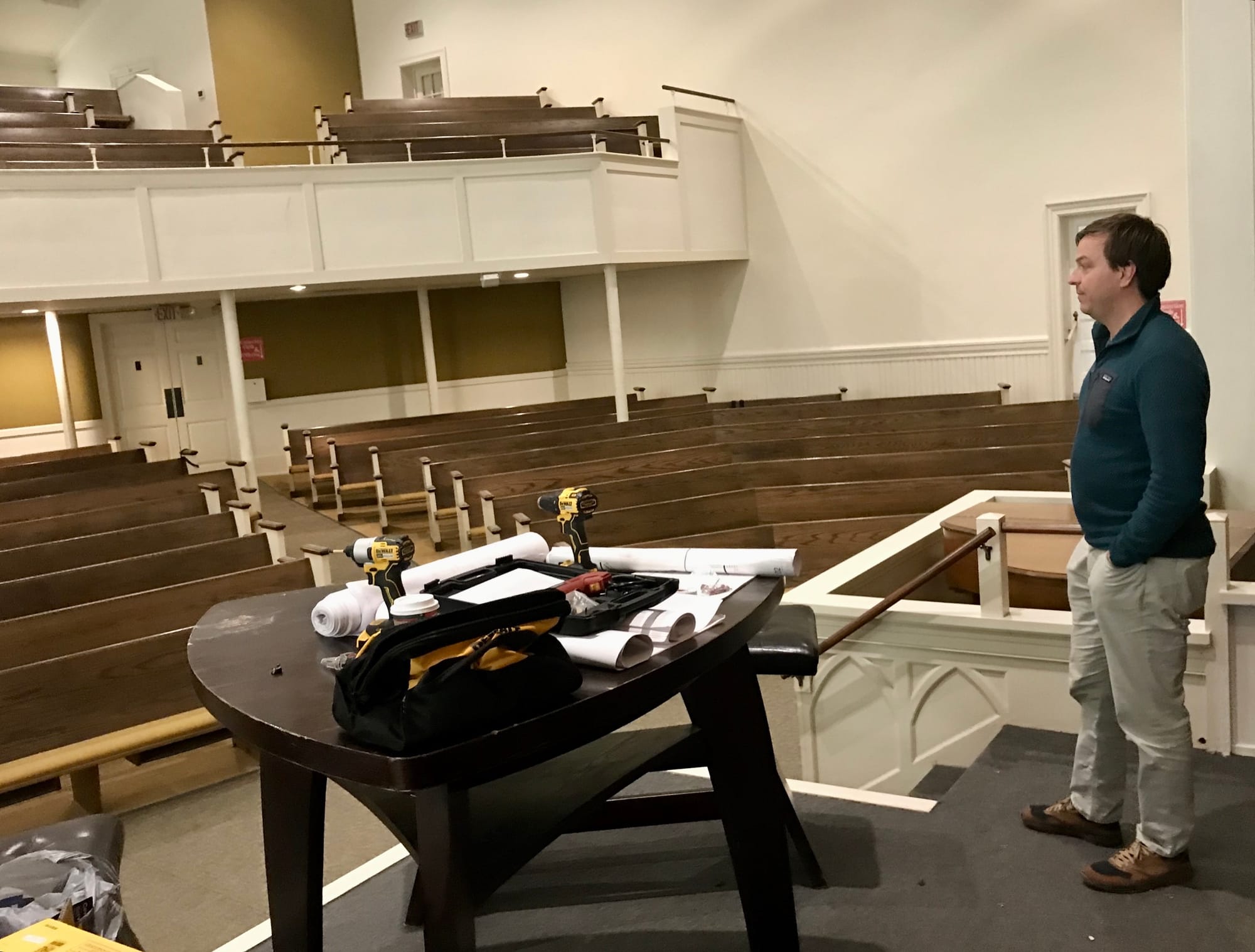
'I want to help out the church'
Cochran recently gave a tour of the Belmont project, where workers were installing interior walls and studs inside the church’s former fellowship hall, where most of the apartments will be constructed.
When completed, Belmont Lofts will offer 32 units, Cochran said. The $4 million construction price tag is expected to be offset by historic rehabilitation tax credits, he added, which provide credits to owners who meet specific standards while renovating old properties.
Some of those guidelines require developers to retain elements of a property’s distinct architectural designs and details, such as the metal walls and dimpled glass windows in a Belmont wing that once served Sunday school students.
The door to one such room bore a sign that read “MARY RUTH CLASS,” which will remain on the door after the project is done.
“I don’t know who Mary Ruth was, but that will always be her class,” Cochran said.
Most of the new apartments will be built in the part of the building that housed classes and offices — nearly 11,000 square feet of space, according to designs by Roanoke architectural firm Balzer and Associates. Units will range in size from 500-square-foot studio apartments up to 900-square-foot multi-bedroom dwellings. A former basketball court on the third floor will be sectioned into four loft-style apartments with skylights.
Belmont Baptist traced its roots back to about 1901, when worshippers gathered at a smaller sanctuary at the corner of Ninth Street and Stewart Avenue. The church was rebuilt in 1914, and thanks to a growing blue-collar Southeast neighborhood where work was plentiful at the American Viscose Corp. — nicknamed the “silk mill” by locals because the company made rayon and synthetic fibers — Norfolk & Western Railway and numerous furniture plants and other factories, Belmont expanded through the mid-1900s. Black and white photographs that once hung in church offices showed throngs of congregants gathered for Sunday services. The church built additions in 1929 and in 1956, as membership topped 1,000 people by the 1950s.
Then, the factories closed and jobs disappeared, seemingly along with the people who once performed them. Young people moved away, never to return, the suburbs grew and the Belmont neighborhood withered into decay and poverty, a state from which it hasn’t fully recovered. Belmont Baptist’s weekly attendance plummeted by 90 percent, with fewer than 100 parishioners occupying pews where 1,000 had once worshipped.
In 2015, with utilities bills mounting and the church’s savings account shrinking, Belmont Baptist merged with Renovation Church, another Southeast congregation that had emerged in the 2010s as a younger, non-denominational Christian church that prided itself on working with poverty-stricken and homeless people, whose weekly worshippers took a casual approach to Sunday mornings. Renovation’s minister, Jon Laughinghouse, usually preached sermons in blue jeans and dress shirts instead of suits or robes.
The congregations merged under the Belmont Baptist name and roof, and attendance seemed to improve — until the Covid pandemic struck in 2020. Many churches struggled to retain regular members during the early days of the pandemic, and the attendance drop-off struck struggling churches especially hard. In 2022, Laughinghouse contacted Cochran’s group about a possible sale and development project.
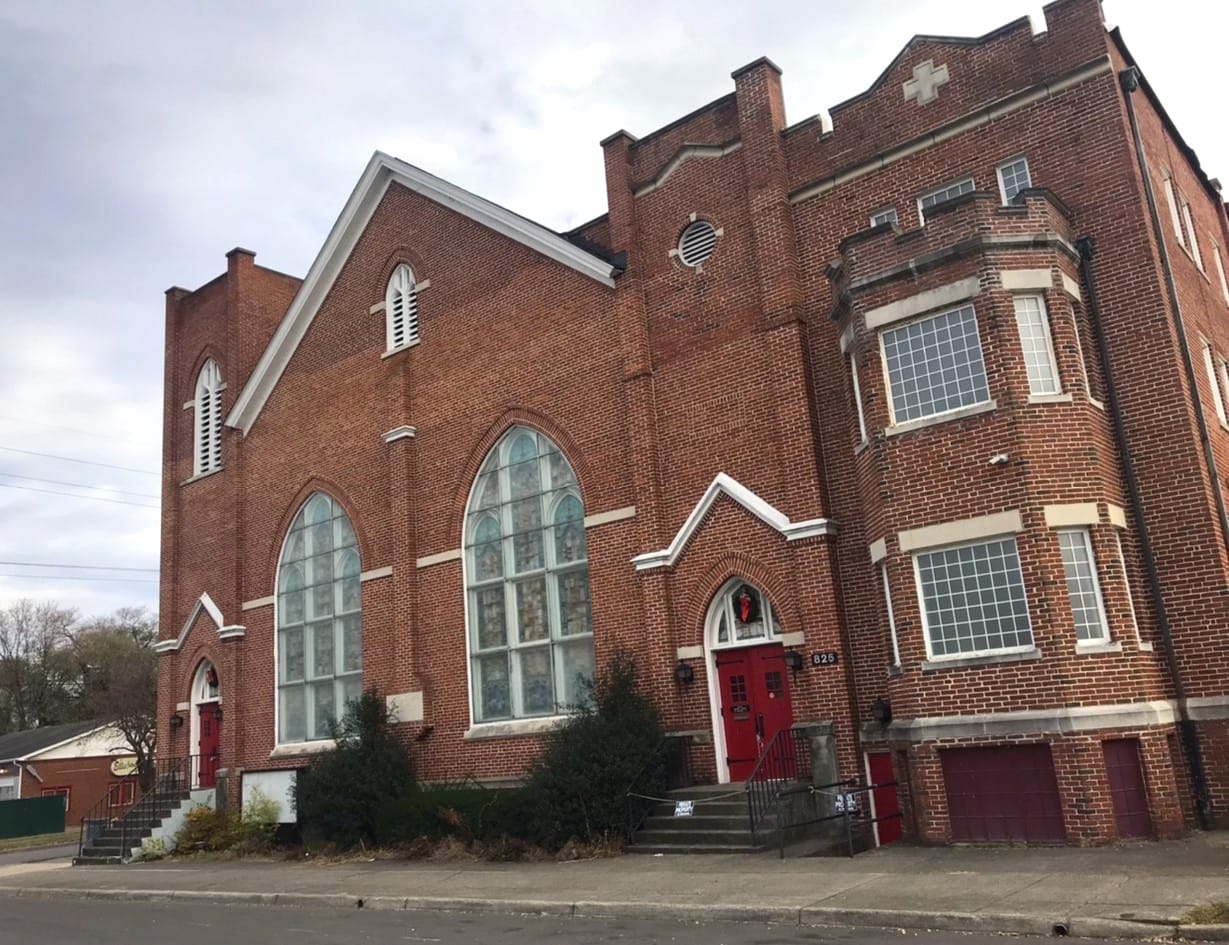
“Jon Laughinghouse and his trustees had decided that the building had become a liability instead of an asset,” Cochran said. “Passing the hat around wasn’t working anymore. It’s hard to replace the roof passing the hat around.”
Cochran, 43, knew Southeast Roanoke because it was the neighborhood his family drove through when entering the city from their Mount Pleasant home in Roanoke County. They shopped at the IGA grocery store on Riverland Road, and Cochran attended William Byrd Middle School in Vinton and graduated from Patrick Henry School in Roanoke.
“I’m not just some random person,” he said. “I’m doing this because I want to help out the church, and I care about what happens to old buildings.”
The Belmont Baptist project is within the boundaries of the Belmont-Fallon Target Area, the city-designated neighborhood slated to receive the bulk of community development funds from the federal government. Cochran noted that other housing and rehabilitation projects are in the works within a few blocks of the church, including renovations by Restoration Housing, the same group behind the Trinity Methodist proposal in Old Southwest. Roanoke is spending about $1.7 million annually in federal funds for the target area.
Belmont Lofts plans to offer below-market rents to people who make less than 60 percent of area median income annually, or around $38,000.
The sanctuary, where services were held for nearly 120 years, will not be touched during the renovation and will remain as is, serving as a gathering spot, possibly for congregations or other events. Bathrooms outside the sanctuary will be modernized. Cochran said that at least one church has inquired about renting the Belmont sanctuary for weekly services.
The Belmont congregation recently embarked upon a ministry of “micro-churches,” where parishioners meet at homes or in small gatherings, then hold larger services at a church or other facility. Belmont Lofts paid $550,000 for the property, city records show.
Cochran hopes the development and neighboring projects will resuscitate the area.
“I’m not homesteading out here,” he said. “Other people are doing things here, too. The neighborhood needs to be cleaned up. We plan to offer clean, safe, affordable housing, which is what everybody deserves.”
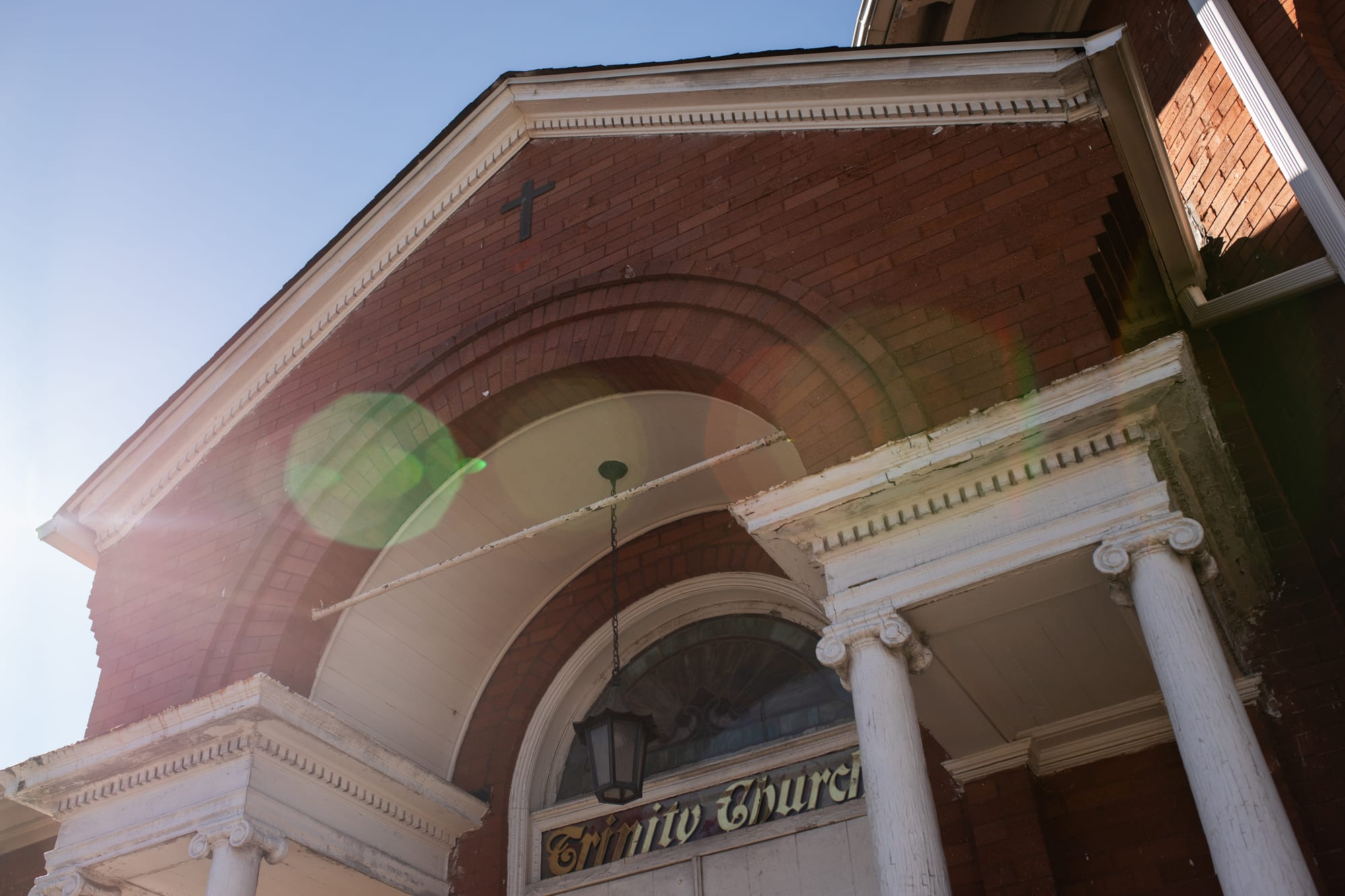
'Honoring the historic legacy'
Joanna Paysour is incredibly busy. Until a couple of weeks ago, she pastored two Methodist churches, holding 9 a.m. Sunday services downtown at Greene Memorial before driving 3-tenths of a mile to Old Southwest to conduct 11 a.m. services at Trinity. She’s leading a massive, complex relocation of church items (and people) from Trinity to Greene Memorial, while keeping up with a child in kindergarten.
And she’s nearly seven months pregnant.
She slowed down for a few minutes recently to reflect on the decision to sell the church building and blend the congregations. In only four years as pastor, Paysour, who grew up in Blacksburg, has learned much about Trinity Methodist’s history. In fact, the congregation started as an offshoot of Greene Memorial in the 1890s, when Methodist congregants met in the old Opera House, a wood-framed community building that stood on Campbell Avenue in Roanoke’s early years, and then spread the church to the growing neighborhoods that sprouted during Roanoke’s railroad boomtown days as the “Magic City.”
Sitting in a pew inside Trinity’s distinctive circular rotunda-topped sanctuary, Paysour described how the first building opened around 1903, then expanded into the current space in the 1920s.
Trinity’s story isn’t dissimilar from Belmont’s: The church flourished in the mid-1900s, then members grew old, died, and their children moved away. The church increased its neighborhood outreach by starting the 3rd Street Coffeehouse in a first-floor meeting space in 1987, a spot where folk and other kinds of acoustic music are performed every Friday night. Thirty years ago, the church became home to Kids Soar, a Christian-based organization that helps low-income children with literacy skills.
The church also suffered major setbacks, including a fire in 2007 and attendance declines during the pandemic.
“The Trinity story is one of a very faithful church that was affected by the same effects of any urban downtown church,” Paysour said. “The people here are tenacious in the face of change, and they are willing to pivot in the face of change.”
No single reason explains why some churches falter and others expand, although the trend line for traditional Christian denominations has maintained a steady downward trajectory in recent decades.
The Pew Research Center found in 2019 that the percentage of Americans who call themselves Christians has declined precipitously in the past 40 years, while the percentage of religiously unaffiliated Americans rose from 17 percent in 2009 to 26 percent in 2019.
Other religion surveys have found younger Americans still believe in spirituality and higher mystical powers, but they are not as inclined to attend traditional church services as older people. Paysour likened the drop off in church participation among the young to the declines experienced by other institutional social organizations, such as civic clubs, veterans groups and other traditional community associations.
“Even young people have sacred spaces in their lives,” Paysour said. “It’s just different from a place with stained-glass windows.”
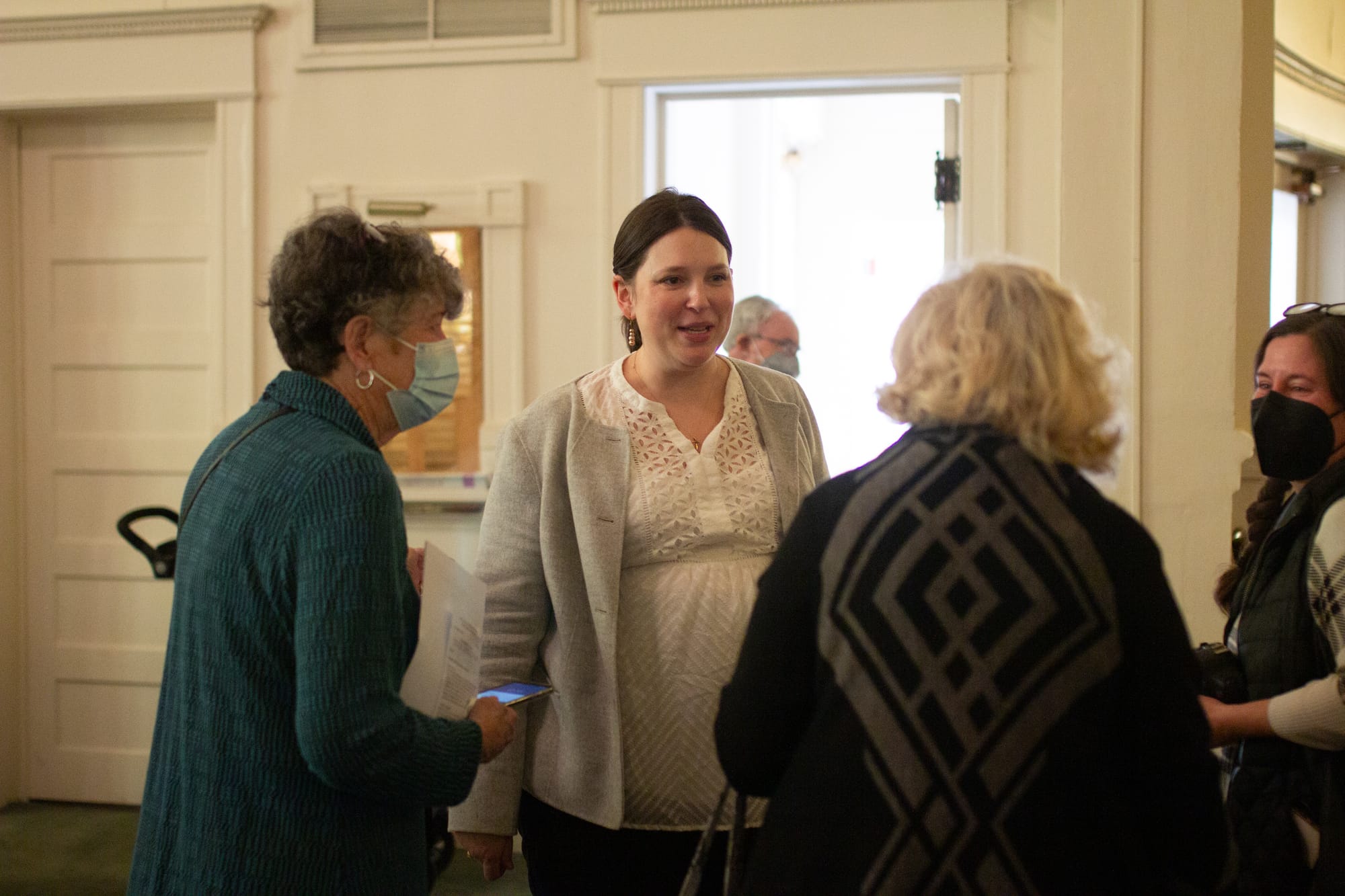
That said, she believes there is a need and a purpose for physical places for people to gather and mingle, especially in an age when society seems lost in a technological abyss of social media that isn’t all that social, where video meetings and text messages substitute for personal communication.
Trinity survived through two world wars, urban changes and two deadly pandemics over 12 decades, so the decision to sell the property wasn’t easy, Paysour said, but it was unavoidable, especially with expensive roof and ceiling repairs needed.
“We didn’t want to see this place fall apart on our watch,” she said.
If approved by the city, Restoration Housing will renovate the adjoining education building to make way for 15 apartments for elderly residents. Similar to the Belmont development, rental rates will be kept below market value, ranging from 50 percent to 80 percent of area median income, according to plans filed with the city. Also like Belmont, the sanctuary will remain intact, and could serve as a place for events or even another congregation.
Restoration’s current plans also call for 3rd Street Coffeehouse and its concerts to continue in the space, which will be leased by Greene Memorial. The Kids Soar program will move to Windsor Hills United Methodist Church.
Restoration Housing executive director Isabel Thornton declined to comment specifically about her company’s plans for Trinity because city leaders have yet to approve the project.
“Many older and historic churches are undergoing adaptive reuse to provide more housing in Roanoke,” she said in an email, speaking broadly about converting churches to residences. “If their original use no longer has the same demand and the alternative is for them to sit vacant indefinitely, then it seems like a wonderful thing to change the use into something that could ultimately serve the community. The new use not only provides more housing but it also activates the building and puts it to good use while also honoring the historic legacy and architectural integrity of the original building.”
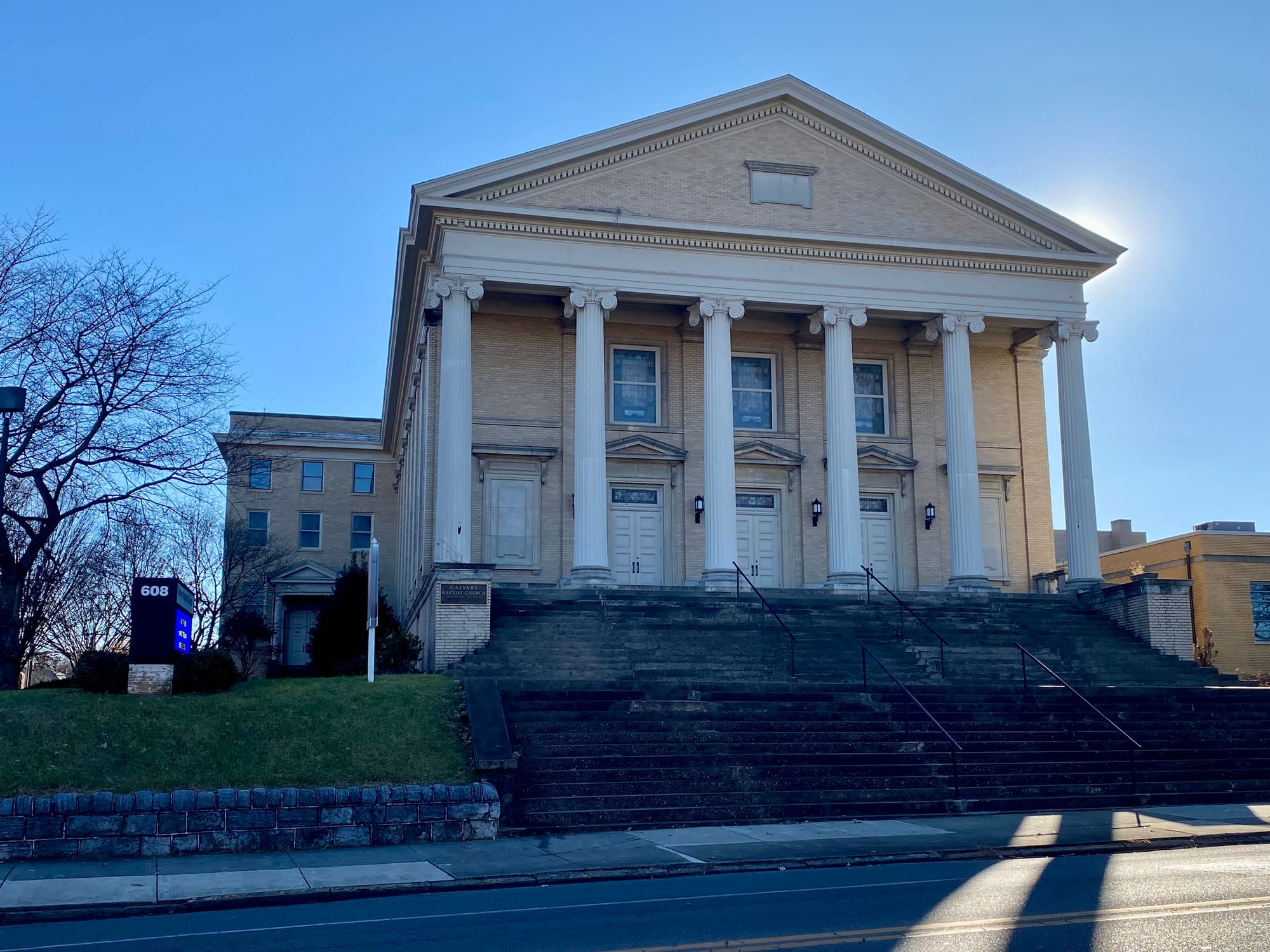
'I look at churches differently'
Richard Macher, whose group purchased Calvary Baptist in 2022, said that he hopes to finalize plans within 30 days, although he said that the project will require financial incentives from the city, such as enterprise zone grants to help offset costs. The Calvary project, which stands in an enterprise zone that runs along West Campbell Avenue, has already qualified for historical tax credits, Macher said.
“It’s a challenging project,” Macher said. “Considering the price of materials, the price of labor, eradicating asbestos,” as well as modifying water and safety systems.
If the financial details work out, Macher said that the renovation could add around 20 affordable apartments, as well as office space and a daycare for preschoolers. Like the other church projects, the sanctuary will remain intact, which means Macher will be looking for a possible tenant, perhaps another congregation, to rent the facility. Including an annex, the buildings comprise about 59,000 square feet, he said. (Macher has also proposed apartments at the former Roanoke Times press building, which he purchased in 2022.)
Macher thinks that converting Calvary into residential and childcare space will continue to enhance the west end of downtown, which in the past 20 years has seen historic buildings transformed into living spaces (Cotton Mill Lofts, Locker Room Lofts) and entertainment venues (Jefferson Center).
“We’re excited about the church,” Macher said. “It’s an important building in the history of Roanoke. All the development happening in that area is good for the city. It’s created a hub.”
Like the other churches slated for redevelopment, Calvary has deep roots and a long history in Roanoke, going back to 1924. Positioned on a rise above Campbell Avenue near the Jefferson Center (a building that itself was transformed from its original use as a high school to becoming a home to concerts, arts organizations and other community groups), the church and its distinctive columns are visible from several blocks away, resembling Roanoke’s version of the Parthenon of ancient Greece.
That kind of history and visual appeal catches the eye of people like Jordan Harman, who is the superintendent in charge of the Belmont renovation. These days, he sees old churches with new eyes.
“I look at churches differently,” Harman said. “I think, ‘How could that work? What could you do there?’”
Even though he’s working on a project designed to bring income to his boss, Harman hasn’t forgotten that he is working on a building that many people consider a holy space. Not long ago, Harman was approached by a woman outside the building, a person he thinks might have been homeless. She asked him a pointed question about his work.
“How’s Jesus gonna feel when he comes back and sees people living here?”
Harman said he told the woman he thought Jesus would approve of the project. After all, the goal is to lift up the poor and those who might not have shelter.
“I think it’s a win-win,” Harman said. He said that taking care of the building’s historic integrity and maintaining its familiar appearance should pay dividends among folks who worry about the church’s transformation.
“Us being good stewards of this building has been beneficial,” he said.
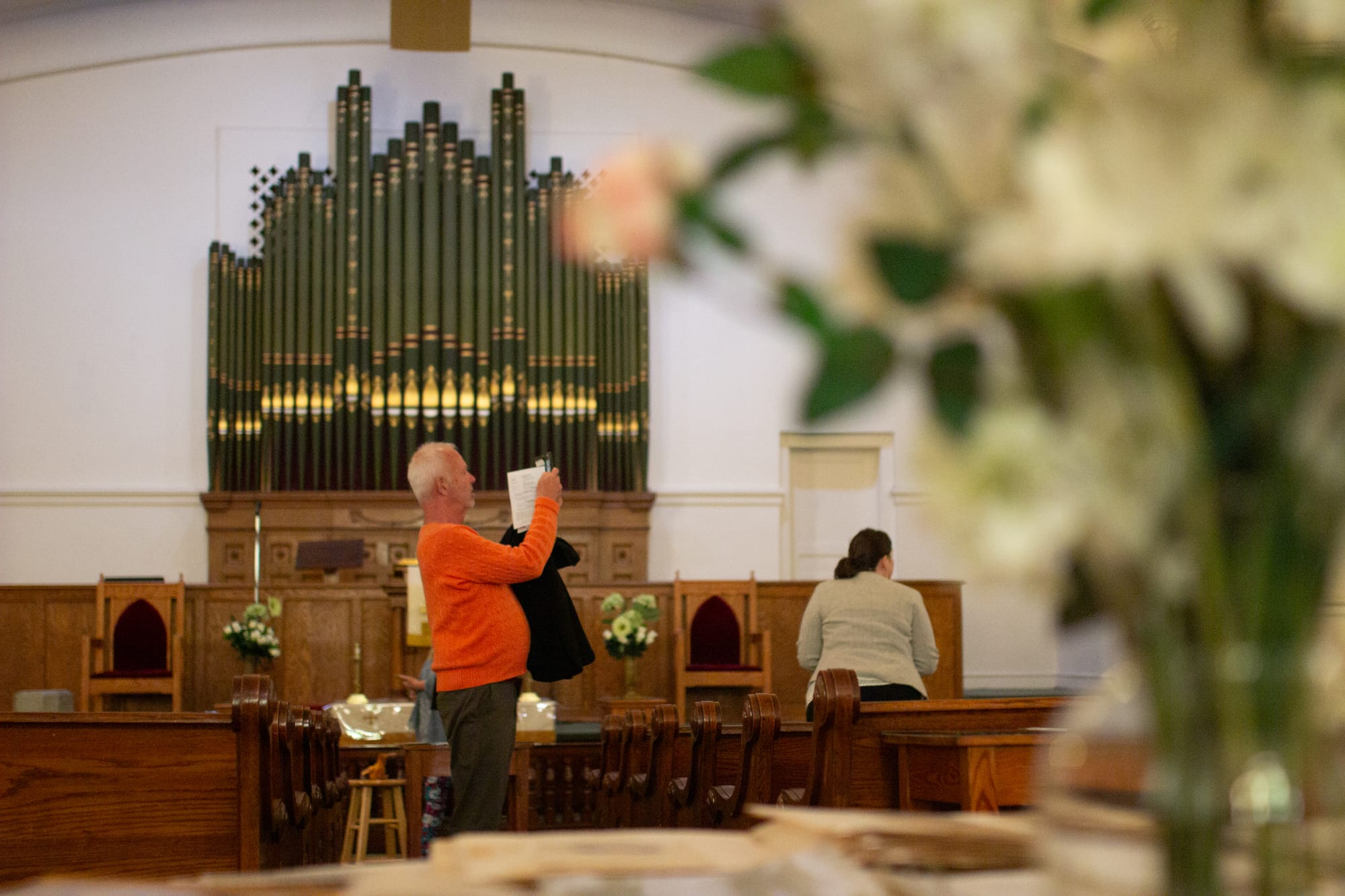
Back at Trinity United Methodist, church member Gene Godwin, a Roanoke Valley physician, attended the final service in the building after more than 70 years as a member. As a child, he lived on Patterson Avenue and took the bus downtown with his mother on Sunday mornings, from where they walked to Trinity. In the 1940s and ’50s, the place was packed with hundreds of people.
The decision to leave the building and join Greene Memorial was inevitable, he said.
“There wasn’t much choice.”
Now 83, Godwin and his family were part of a closing service that was sometimes melancholy and teary, but one that cast a hopeful eye to the future. Paysour blessed objects that will remain in the sanctuary, including the organ, the altar, a table and pulpit.
During her sermon she held back tears as she told the congregation that they were bold for making the painful, yet proper decision they had made.
“When we thought there was no way, we asked God to make a way,” she said. “We believe that any place with Jesus is a place worth going.”
As the final service in the 120-year-old building wound down, regulars from the 3rd Street Coffeehouse led the crowd in singing “Will the Circle Be Unbroken,” the familiar old song with Southwest Virginia roots, which concludes with the chorus line: “There’s a better home a-waiting in the sky, Lord, in the sky.”
Or, for Trinity, downtown.

